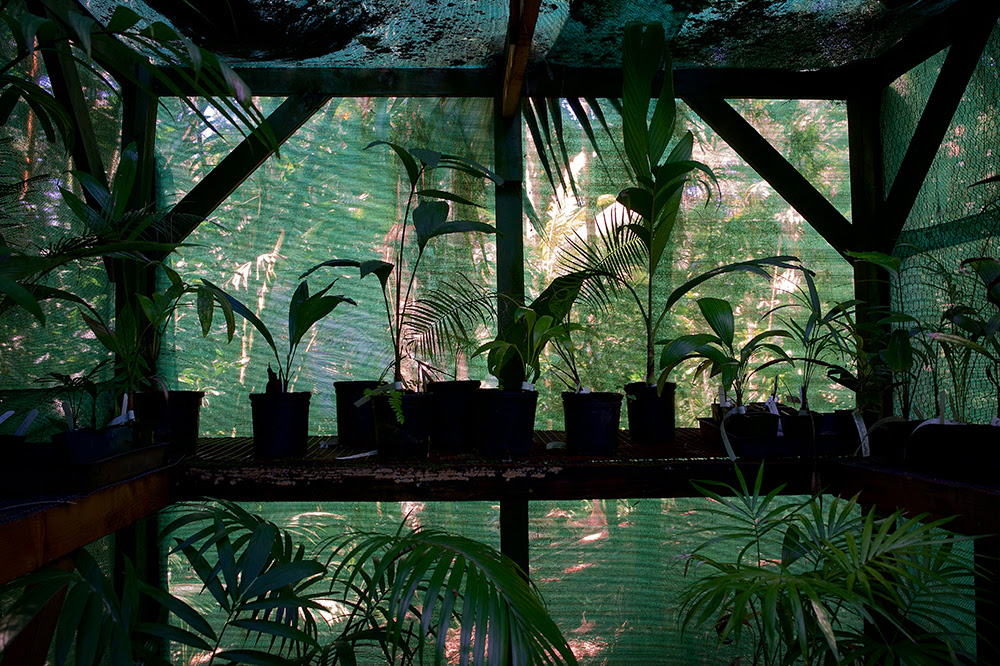
Our Loulu Project
“Director’s Notes” are excerpts from our monthly email newsletter, “Stories from the Garden.” Subscribe and see past issues here.
Dear Friends,
Last November, only a few months after the fires wounded our island, a thirty-four year-old idea took root: W.S. Merwin’s 1989 proposal for “A Project to Save the Hawaiian Pritchardias.” Found among his papers in the early days of our stewardship, it made its way into our imaginations as we began to consider how we might contribute to recovery—and eventual resilience and revitalization—in Lāhāina. William, a self-proclaimed amateur gardener “learning as he goes” had once imagined a collective effort to collect wild seed from the only genus of palms native to Hawaiʻi—the Pritchardia, or loulu in ʻŌlelo Hawaiʻi. He wrote of growing “seedlings, some for horticultural propagation and some for planting at sites once they have been adequately protected.” We, too, in the days after the fires, committed to learning as we went—by listening as the needs and desires of our Lāhainā friends and neighbors came into focus, and efforts to meet those needs and desires coalesced.
Now, with the generous support and advocacy of The Garden Club of Honolulu, we have put our own Loulu Project into motion. We have developed a pilot program that has helped us identify a few Pritchardia glabrata palms (a species of loulu endemic to west Maui and Lānaʻi) in cultivation, known to have grown from wild seed. We have now sourced seed from those plants with the aim of growing up seedlings for Lāhainā. As I write, we wait and watch, eager to see these seeds germinate. We are also working to repair and improve William and Paula’s iconic shade house, which will shelter these small loulu until they are ready for outplanting by way of our friends and partners with Treecovery Lāhainā. In this way, we honor the same impulse that animated William’s own vision for collective action.
As amateurs ourselves, we relish the questions that emerge: what would it look like to support the perpetuation of loulu species endemic to Maui more broadly? Might such an effort play a role in the eventual expansion of William’s garden up into the as-yet unplanted acres? We have begun to bring experts and amateurs, scientists and citizens together to explore questions about plants and their histories, presents, and futures, here in the garden, across our island, and well beyond. Last month, we were thrilled to welcome Dr. Susan Fawcett of National Tropical Botanical Garden, whose research seeks to understand the distribution and evolution of Pritchardia glabrata. Her time here opened up new possibilities for our project and for the garden we tend.
William’s impulse to join together with “a small number of devoted individuals” to protect and propagate loulu had rooted itself long before he outlined “A Project to Save the Hawaiian Pritchardias,” in his early days here in Hawaiʻi. His 1989 draft begins like this: “For the past fifteen years I have studied the culture and language of the islands where I have the good fortune to live, and for much of the last decade I have been interested in finding, protecting, propagating different species of Hawaiian flora—natives.” Now, The Conservancy carries forward both the commitment to knowing intimately the places one loves, and the impulse to participate in their well-being. We are honored to imagine new possibilities for place, poetry, and practice alongside all of you.
With gratitude,
Sonnet